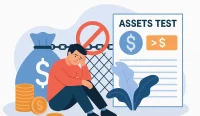The Tax Credit Expiration Reality: An Overlooked Opportunity
With the expiration of federal solar tax credits, many investors fear shrinking margins and reduced demand. However, history shows that market disruptions often create new opportunities for those who adapt. The end of tax credits is not the end of solar profitability—it’s a chance for smart investors to rethink strategies and capture hidden value.
Strategy 1: Eliminating Dealer Fees for Maximum Profit
Understanding Solar Dealer Fees and Their Hidden Costs
Dealer fees are often embedded in solar financing, inflating the cost of installations and eroding investor returns. These fees, sometimes as high as 20%, are paid to third-party dealers for arranging financing, but they can significantly reduce the net profit from each project.
The Dealer Fee Elimination Strategy with Refinancing
One powerful approach is to eliminate dealer fees through strategic refinancing. By initially using dealer financing to close deals quickly, then refinancing with lower-cost loans or cash-out options, investors can recapture lost margins. This not only increases net returns but also improves the competitiveness of your solar offering.
Strategy 2: Tax Equity Transfer for Immediate Cash Flow
The Tax Credit Challenge and Tax Equity Transfer Solution
With tax credits gone, investors must find new ways to unlock upfront capital. Tax equity transfer—where tax benefits are sold or transferred to third parties—can provide immediate cash flow. This approach, common in commercial solar, is now being adapted for residential projects, allowing investors to monetize tax advantages even after credits expire.
Commercializing Residential Solar for Tax Advantages
By structuring residential solar projects as commercial entities, investors can access tax equity markets and attract institutional capital. This not only offsets the loss of direct tax credits but also opens new revenue streams and partnership opportunities.
Profit After Solar Tax Credits End
Even as solar tax credits phase out, savvy investors are finding hidden value in innovation, efficiency, and renewable tech. Employers in this sector can thrive by hiring clean-energy talent who see beyond policy shifts. Post your job on WhatJobs today and connect with professionals shaping tomorrow’s energy landscape — free for 30 days.
Post a Job Free for 30 Days →Maximizing Price Per Watt (PPW) and Competitive Positioning
With incentives gone, maximizing Price Per Watt (PPW) becomes critical. Investors should focus on operational efficiency, supply chain optimization, and value-added services to command higher PPW and differentiate from competitors. Leveraging technology and data analytics can further enhance margins and market share.
The Hidden Opportunity in Industry Adversity
Periods of industry adversity often weed out weaker players, leaving room for well-prepared investors to consolidate market share. By adopting innovative financing and operational strategies, you can turn the end of tax credits into a springboard for growth.
Future-Proof Investment Strategies
Smart investors are diversifying portfolios, exploring battery storage, EV integration, and community solar projects. These future-proof strategies ensure continued profitability regardless of policy changes.
Implementation Considerations and Risk Management
Success requires careful planning: assess refinancing risks, vet tax equity partners, and stay compliant with evolving regulations. Building strong relationships with lenders and legal advisors is essential for long-term success.
FAQ: Profiting After Solar Tax Credits End
Can solar investments still be profitable without tax credits?
Yes, by eliminating dealer fees and leveraging tax equity transfers, investors can maintain strong returns.
What is the biggest risk after tax credits expire?
The main risk is reduced demand, but innovative financing and operational efficiency can offset this.
How does tax equity transfer work for residential projects?
By commercializing residential projects, investors can sell tax benefits to third parties for upfront cash.
What are the best strategies to maximize PPW?
Focus on operational efficiency, supply chain management, and value-added services to command higher PPW.
By embracing these strategies, smart investors can thrive in the post-tax credit era and unlock new opportunities for growth and profitability.




